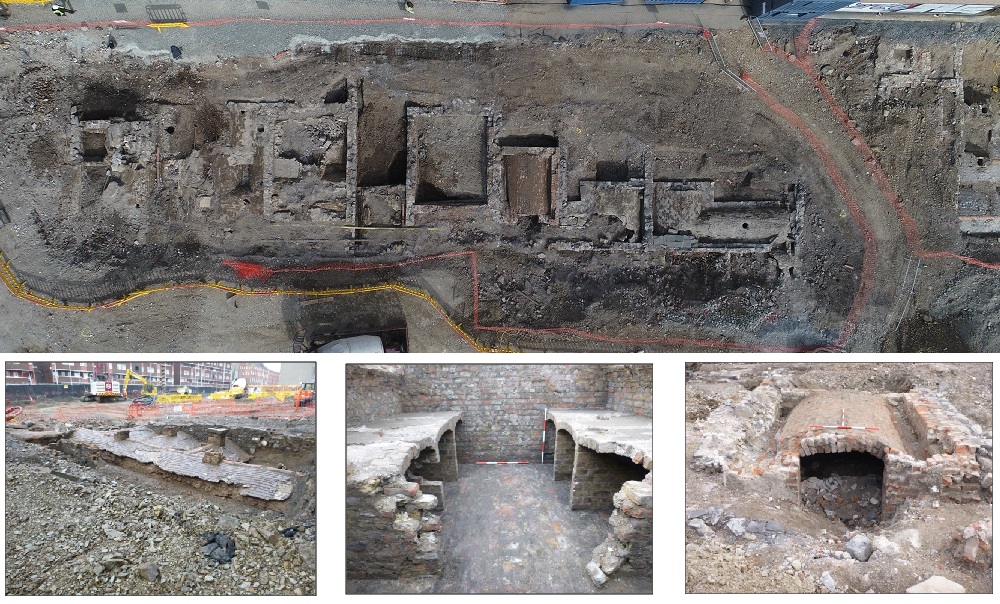2019:782 - DUBLIN 1: Dominick Street Lower, Dublin
County: Dublin
Site name: DUBLIN 1: Dominick Street Lower
Sites and Monuments Record No.: N/A
Licence number: 19E0008
Author: Paula Slaughter & Marion Sutton; Shanarc Archaeology Ltd.
Author/Organisation Address: Unit 39a, Hebron Business Park, Hebron Road, Kilkenny
Site type: Town
Period/Dating: Modern (AD 1750-AD 2000)
ITM: E 715484m, N 734888m
Latitude, Longitude (decimal degrees): 53.351585, -6.265372
Archaeological excavations were carried out between 14 January and 17 September 2019 in respect of a mixed commercial and residential development on Dominick Street Lower, Dublin 1, in Dublin’s north inner city. The site, an area measuring 5,585m² (0.5585ha) in size, is located at the south-east end of the street, extending from the junction with Parnell Street, on the east side of the street, toward present day Dominick Place.
The excavation recorded the lower levels (basement rooms, rear yards and ancillary buildings) associated with a terrace of 13 Georgian houses, Nos 3–15 Dominick Street Lower, in addition to the original mid-18th-century alignment of Dominick Place—the laneway that provided access to the coach house/stables at the back of the house plots. The excavated structural remains are broadly contemporary in date, with the basement footprint of each property set down during the Georgian era (1714 to c. 1830–37).
The findings reflect the documentary and cartographic evidence, which outline how the area containing Dominick Street Lower remained greenfield on the periphery of the city until the 1720s, when Sir Christopher Dominick began to develop the street. Four houses were constructed by 1756 and the Georgian terrace encompassing Nos 1-15 Dominick Street Lower developed by 1773.
The material culture recovered during the excavation proved to be consistent with the overall history and development of the site, with some material pre-dating the Georgian era, including flint artefacts, 17th-century clay pipes and other structural debris identified, that either represent residual activity at the site or material that was introduced to the site during the development process.
The recovered material culture reflects the changing nature of the occupants of the terrace, which coincided with the changing political, economic and social fortunes of the city. These artefacts represent the former possessions of members of the gentry and political elite in the 18th century to merchants, professionals and accommodation providers through the 19th century, and finally the city’s poor from the late 19th and early 20th centuries when the area had fallen into decline and the once grand houses had become tenement accommodation. The Georgian buildings remained as such until they were demolished in the late 1950s and replaced in the 1960s by Local Authority social housing forming part of a complex known as the Dominick Street Flats.

